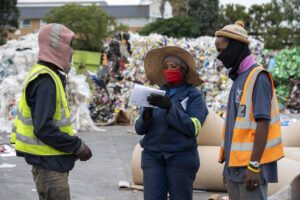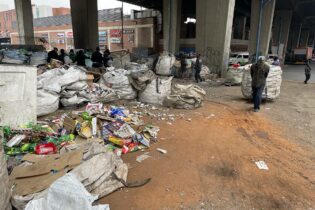Is waste paper really ‘waste’ if it has a value? The answer is no, according to Fibre Circle, the producer responsibility organisation which focuses on diverting paper and paper packaging from South Africa’s landfill through collection and recycling.
“When we separate our recyclables from general rubbish, we realise there is a treasure to be found in the trash,” says Edith Leeuta, CEO of Fibre Circle. “There is money to be made in the trade of recyclables and this, in turn, supports livelihoods and creates businesses,” notes Leeuta adding that recycling can provide economic opportunities for citizens from all walks of life. The paper recycling industry is a vast and intricate network of informal collectors, buy-back centres, waste traders, formal collection programmes, sorting yards and recycling mills. Paper and paper packaging is not waste but a valuable commodity. For manufacturers, recycled paper is an alternative fibre, with nearly 60% of paper and paper packaging used to produce new paper packaging and tissue products.Paper recycling ensures that this useful paper fibre does not end up in a landfill where it becomes difficult if not impossible to retrieve, due to contamination.
Make a difference, sort your waste
Everyone uses paper in one way or another every day, from business documents to school reports, from cereal boxes to milk cartons and even toilet roll cores. “Let’s not forget all those online shopping boxes and grocery delivery bags,” adds Leeuta. Keeping your paper recycling in a separate bag for your local waste collectors – you will save them the time and the health risk of digging through a week’s worth of wet and smelly waste.10 things you can put out for a recycling collector
Keep these out of your bin and in a separate bag, box, or crate for a recycling collector.- Used office paper
- Brown cardboard boxes
- Food packagings such as cereal, toothpaste, pizza, and takeaway boxes (remove food residue)
- Grocery delivery bags and takeaway bags
- Milk and juice cartons (depending on the area)
- Plastic milk bottles
- PET soft drink bottles – various sizes
- Fabric softener bottles
- Aluminum soft drink cans
- Tin cans







